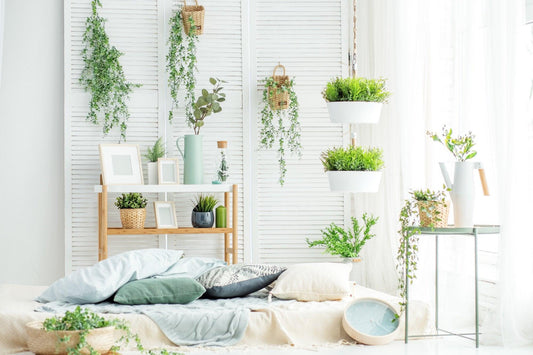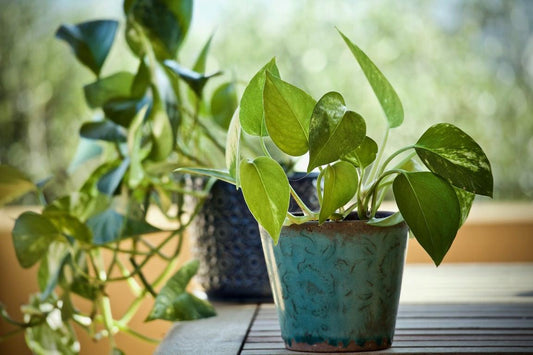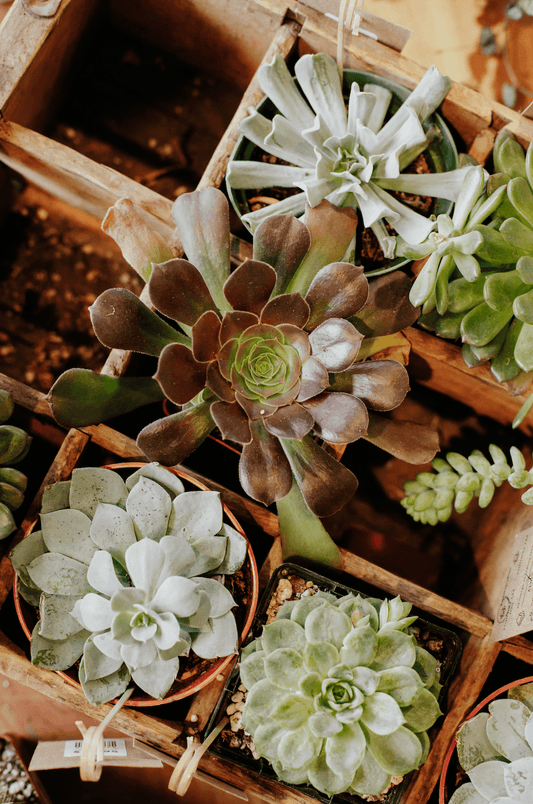Pilea
How to Care for the Pilea
Overview
The Pilea makes for a great starter plant that inexperienced growers can easily care for. Their foliage varies considerably—from bright green, coin-shaped leaves to textured, lance-shaped ones, from heart-shaped leaves to moss-like one—given that they belong to a genus consisting of over 600 species, including both upright and trailing varieties. As young plants, Pilea leaves tend to cascade in a circular fashion, creating a globular shape. When they mature, their stem grows thicker and taller, creating a tree-like plant. These moderate to fast growers bloom on occasion, producing tiny pink or cream flowers.


Profile
One the most commonly recognised variant is Pilea Peperomiedes, also known as Chinese Money Plants. These are quirky little plants with round, flat leaves that resemble coins, hence the ‘money’ in their nickname. They have also been compared to lilypads, pancakes, and even UFOs. Another popular one is the Pilea Cadierei aka the Aluminium Plant, characterized by the metallic silver quilted patterns on its oval-shaped leaves. The Pilea Involucrata and Pilea Mollis are known for their fuzzy, textured leaves with sawtooth edges. Colors vary, with green edge and maroon veins and purple undersides being the most common.
These plants have a naturally bedraggled appearance, and tend to get leggy and have brittle stems, but you can help encourage compact growth by pinching off new tips. If growing in containers, you may need to repot annually in slightly larger pots. There is also an option to start new plants using cuttings. Place them in moist peat and wait for them to grow roots. Pileas produce a lot of pups, making them a great gift to share with friends.




Low light
Pileas do best in high humidity, well-draining soil, and temperatures above 50 degrees Fahrenheit. They prefer bright, indirect sunlight up to medium light, and can adapt to low light conditions; they will, however, stretch out a bit searching for light rather than staying in their spherical shape. The leaf shape will still remain the same, though. Too much light will cause sunburn, which will look like bleached patches on the leaves. Make sure to rotate your Pilea every once in a while in order to keep its shape.

Occasional
Pileas tend to be on the thirstier side. They like an evenly moist soil but can dry out a little bit. It’s best to water a Pilea when the top inch or so of soil is dry. Good drainage, both from the soil and the pot, is important for the health of your pilea. Another way to tell if your Pilea is ready to be watered is to feel the leaves. If the leaves are thin and soft, it’s ready to be watered; if they are thick and hard, leave it be for the moment.

Easy breezy
Pileas are non-toxic to people and animals, but are not meant to be ingested.

Pet Friendly
FREQUENTLY ASKED QUESTIONS (FAQs)
on Pilea
Why is my pilea drooping/curling downward?
There are a few reasons why your pilea could be drooping.
If the leaves are yellow and drooping, it could be a sign of overwatering. Pilea leaves are supposed to be flat as a pancake, so if the leaf itself is drooping in addition to the leaves’ stems, then signs are still pointing to overwatering. It’s best to repot your pilea in dry, well-draining soil and allow for the soil to dry 75-85% before watering again.
Drooping can also be a sign of underwatering. Underwatered pileas look similar to overwatered pileas, except for the color. If the leaves are regular colored and shaped, and only the leaf stems are drooping, then your pilea is probably in need of some water. Check a few inches into the soil to diagnose the problem.
How do you propagate a pilea?
Pileas cannot be propagated from a single leaf. You must propagate a pilea pup if you want more pilea plants. Luckily, pileas sprout babies frequently.
When you are ready to separate a pup from the parent plant, use a clean blade or scissors to cut the pup off. Try to go as close to the soil or parent plant as you can get. If the pup already has roots, it can be planted straight into soil. If it doesn’t have roots yet, you can put the base of it in a glass of water and wait a few weeks for it to root.
Remember, the longer the pup stays attached to the parent pilea, the better the chances of survival when on its own.
Why is my pilea curling upward?
Sometimes pilea leaves curl inward in a cup shape rather than curling down. This can happen because of too much sun, too much heat, underwatering, or nutrient deficiency.
In order to diagnose what the cause of the cupping is, you’ll need to gather more evidence. Is the soil bone dry? Are the leaves sunburnt? Is there an artificial heat source nearby? When was the last time you fertilized your pilea? These are questions you can ask yourself during your investigation. If it’s too much light or heat, move your plant away from the issue. If it needs water, give it a thorough soaking.
Why is my pilea slightly spotted?
If your pilea is spotty but healthy otherwise, there is nothing to worry about. These spots, which should be about the size of a grain of salt, are simply mineral deposits developed as the plant photosynthesizes. Tap water contains a lot of minerals that can sometimes show up on plants. If you want the dots to go away, try watering your pilea with only filtered water or natural rainwater.
If the spots are brown or yellow and larger, it might be a sign of root rot. If the spots are white-ish and larger, it might be sunburn.




